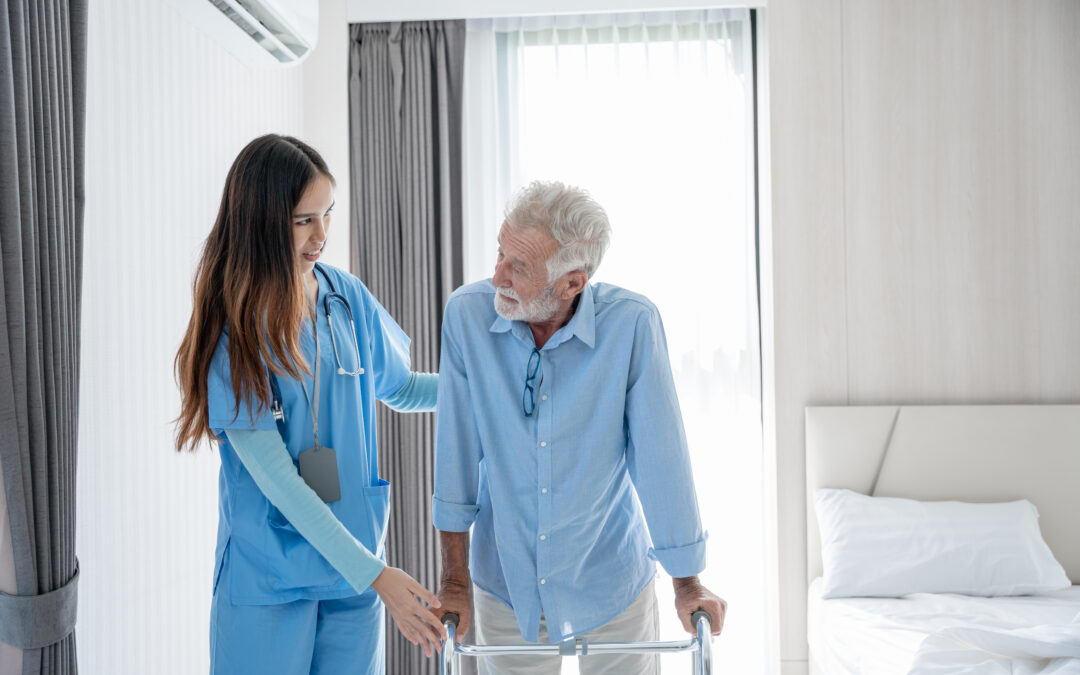Aging adults face a unique set of challenges, with one of the prevalent concerns being the increased risk of falls. As we grow older, our physical strength, balance, and coordination can become compromised, which can result in accidental slips, trips, or falls. According to the Centers for Disease Control and Prevention, one out of every four seniors experiences a fall each year, with falls being the leading cause of both fatal and nonfatal injuries among older adults. Consequently, it is vital to create a safe living environment for seniors to reduce these risks, maintaining their independence and well-being.
In this blog, we will focus on fall prevention strategies for seniors and how in-home care services can assist in creating a safe and secure environment in which seniors can age comfortably. We will feature a range of informative and educational articles, comprising guides, checklists, FAQs, expert advice, and more. Each content piece will provide valuable insights and practical tips to mitigate the risk of falls and ensure the ongoing safety and well-being of your loved ones as they get older.
Top 10 Fall Prevention Tips for Seniors
- Remove Clutter: Keep walkways clear of obstacles and ensure regularly used items are easily accessible.
- Install Proper Lighting: Ensure well-lit rooms, hallways, and entryways to help seniors navigate their homes safely.
- Use Non-Slip Mats: Place non-slip mats in the bathroom and other slippery surfaces to reduce the risk of falls.
- Secure Carpets and Rugs: Ensure carpets and rugs are firmly attached to the floor to prevent tripping hazards.
- Install Grab Bars: Place grab bars in bathrooms and other necessary areas to provide extra support and stability.
- Encourage the Use of Assistive Devices: Assistive devices such as canes or walkers can help seniors maintain their balance and reduce the risk of falls.
- Rearrange Furniture: Arrange furniture to create clear and accessible pathways for seniors to navigate throughout their homes.
- Wear Proper Footwear: Seniors should wear well-fitted, non-slip shoes or slippers to prevent falls.
- Create an Emergency Plan: Develop a plan for seniors to follow in case a fall occurs, including phone numbers of emergency contacts and essential medical information.
- Keep Up with Regular Health Checks: Ensure seniors have routine checkups to address potential health issues that may contribute to falls, such as vision impairment or medication side effects.
How In-Home Care Services Can Help Prevent Falls
- In-Home Safety Assessments: Professional caregivers can evaluate seniors’ homes for potential fall hazards and offer personalized recommendations for modifications and improvements.
- Assistance with Daily Activities: Caregivers can support seniors with activities that may pose a risk of falls, such as bathing, dressing, and navigating stairs.
- Medication Management: In-home care providers can help seniors manage medications properly and minimize side effects that may contribute to falls (e.g., dizziness or lightheadedness).
- Promoting Exercise and Balance Training: Caregivers can encourage seniors to participate in physical activities and exercises that help maintain their strength, balance, and mobility, reducing the risk of falls.
- Regular Monitoring: With consistent caregiver presence, seniors have an extra layer of safety and support in case falls do occur or if assistance is needed.
Home Safety Assessment for Fall Prevention
- Floors and Walkways: Check for clutter, loose rugs, or uneven flooring that may pose tripping hazards.
- Lighting: Assess the quality of lighting in all areas of the home, paying attention to stairways, hallways, and entrances.
- Staircases: Examine stairs for optimal safety measures, which may include handrails, non-slip treads, or additional lighting.
- Bathrooms: Evaluate the bathroom for safety features such as grab bars, non-slip mats, and accessible shower or bathtub designs.
- Bedroom: Ensure seniors can move around the bedroom without obstructions and that the bed is at an appropriate height for them to get in and out of easily.
- Kitchen: Assess the placement of regularly used items in the kitchen, ensuring they are within reach to minimize the risk of falls due to stretching or improper balance.
- Outdoor Areas: Check for potential hazards in outdoor areas, such as uneven walkways, stairs without railings, or slippery surfaces.
The Importance of Exercise in Fall Prevention for Seniors
- Strengthening Muscles: Engaging in regular exercise helps seniors maintain and build muscles, which can enhance their ability to stay upright and prevent falls.
- Improving Balance and Coordination: Exercises focusing on balance can train seniors to control their body and develop greater coordination, making them less likely to experience falls.
- Boosting Mobility and Flexibility: Physical activity encourages seniors to maintain their range of motion, flexibility, and overall mobility, contributing to reduced fall risk.
- Enhancing Bone Density: Weight-bearing exercises can help seniors maintain bone strength and density, reducing the chances of fractures if falls do occur.
Conclusion:
Reducing the risk of falls among seniors is crucial to enhancing their independence and well-being. By implementing practical fall prevention strategies and seeking the support of in-home care services, families can create a safe environment for their aging loved ones.
Concerned about your aging loved one’s safety and risk of falls? HoneyBee Home Care’s experienced caregivers provide personalized and attentive in-home care, focusing on fall prevention and overall security. Contact us today to schedule a free in-home consultation and discover how we can help protect your loved ones as they age gracefully!

